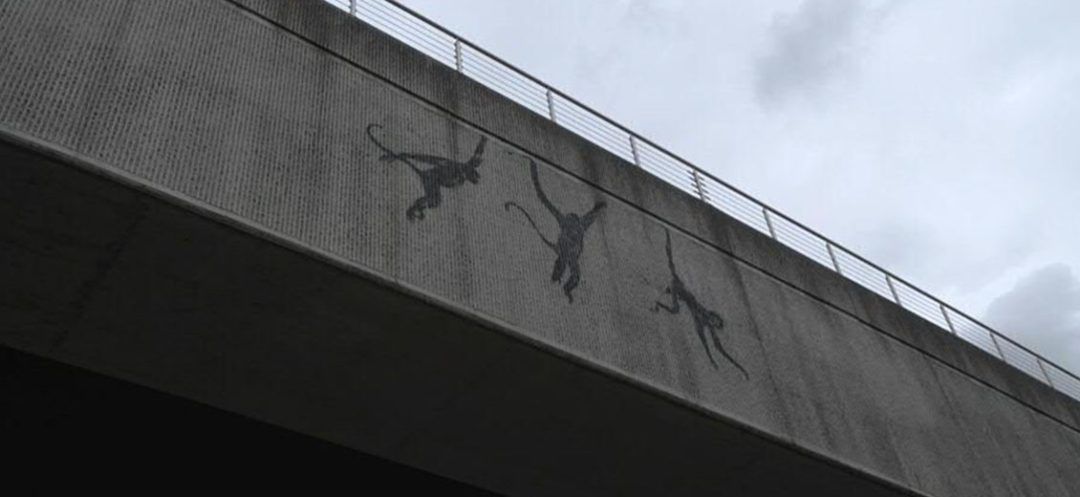
In a span of three days, renowned British street artist Banksy has unveiled a trio of thought-provoking animal-themed artworks across London, sparking speculation about their underlying message.
The streets of London have once again been graced by the enigmatic brushstrokes of Banksy, as the elusive artist unveiled three new works in the span of just three days. The animal-centric collection, featuring a goat, two elephants, and three monkeys, has left fans and onlookers buzzing with theories about the deeper meaning behind the artworks.
Banksy, known for his satirical and politically charged street art, kicked off the trilogy on Monday with a depiction of a goat precariously balanced atop a wall, surrounded by tumbling rocks. The piece, located in Richmond, southwest London, immediately drew attention and speculation. Daniel Lloyd-Morgan, a 60-year-old artist, suggested that the goat might actually be a mountain gazelle from Palestine, hinting at a possible commentary on the ongoing conflict in the region.
The following day, Banksy struck again, this time in Chelsea, southwest London. Two elephant silhouettes, their trunks stretched towards each other in a gesture of connection, appeared on a wall. The simplicity and elegance of the piece left many pondering its significance. Could it be a call for unity and compassion in the face of adversity?
The final installment of the trilogy emerged on Wednesday, as the black silhouettes of three monkeys were spotted swinging from a railway bridge. The playful yet poignant imagery prompted further discussion about the artist’s intentions. Fawaz Gerges, a university professor, interpreted the artwork as a reflection on the ecological crisis threatening humanity. He noted that Banksy’s recent works seem to focus on animals, trees, and oceans, suggesting an overarching theme of environmental concern.
The timing of Banksy’s London takeover has also raised eyebrows, as England grapples with violent far-right, anti-immigrant protests in the wake of the tragic murder of three girls. Demonstrators have targeted hotels housing asylum seekers, fueling tensions and division within communities. Banksy, who has consistently shown sympathy for the plight of refugees, may be using his art to comment on the current sociopolitical climate.
This wouldn’t be the first time Banksy has addressed the refugee crisis through his work. Just last month, at the Glastonbury music festival, the artist launched an inflatable boat over crowds, depicting dummy migrants wearing life vests. The powerful visual statement served as a reminder of the countless lives lost in perilous journeys across the sea.
As fans and art enthusiasts attempt to decipher the meaning behind Banksy’s latest creations, the artist’s silence only adds to the intrigue. Known for his anonymity and refusal to provide explicit explanations, Banksy leaves the interpretation of his work open to the public. This approach has become a hallmark of his artistic style, inviting viewers to engage with the pieces on a personal level and draw their own conclusions.
The appearance of three Banksy artworks in such quick succession is a departure from the artist’s usual modus operandi. Typically, his works are spaced several months apart, allowing each piece to have its moment in the spotlight. The rapid-fire nature of this animal-themed trilogy has only heightened the sense of anticipation and excitement surrounding Banksy’s presence in London.
As the city buzzes with theories and discussions about the deeper meaning behind the goat, elephants, and monkeys, one thing remains clear: Banksy’s ability to captivate and provoke thought through his art is as strong as ever. Whether the pieces are a commentary on Palestine, a call for unity, a reflection on the ecological crisis, or a combination of all these themes, Banksy has once again demonstrated his mastery of using public spaces as a canvas for social and political commentary.
With AFP
Read more



Comments